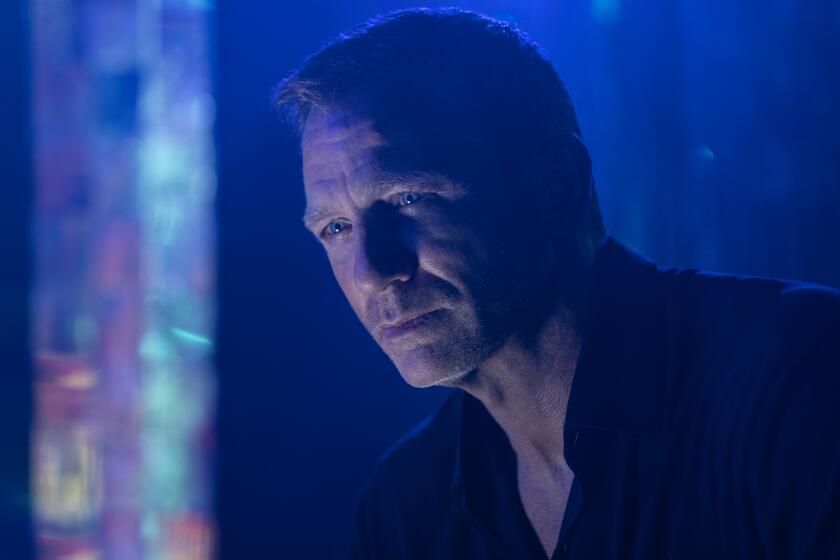How Cary Fukunaga brought James Bond into a new era in ‘No Time to Die’
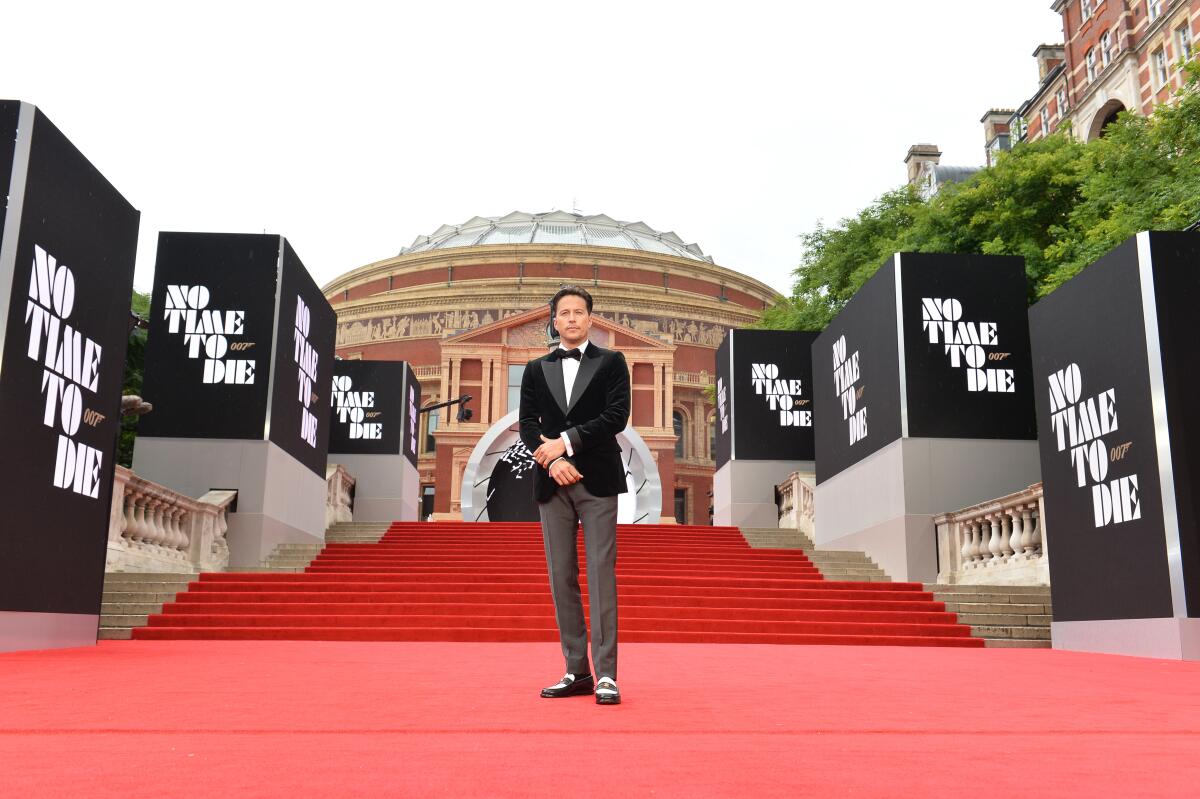
- Share via
After some 18 months of delays due to the global pandemic, director and co-writer Cary Joji Fukunaga had his doubts that his first entry in the enduring James Bond franchise, “No Time to Die,” was really, at long last, about to be released. Until he was seated near actual royalty.
“When we had the premiere, part of me was still thinking this might not happen,” Fukunaga said. But the experience hit home when he took his place at London’s Royal Albert Hall. “I was sitting in the same box with Prince Charles, Camilla and the Duke and Duchess of Cambridge. So if I moved my leg the wrong way when I’m adjusting it, I’m knocking into the back of Prince Charles’ chair.”
With a screenplay credited to Fukunaga, “Fleabag” creator Phoebe Waller-Bridge and franchise veterans Neal Purvis and Robert Wade, “No Time to Die” is the fifth and purportedly final film to star Daniel Craig in the role of the British secret superagent. While the release delays only increased speculation about the film’s box-office potential, it’s already a hit overseas, having opened in the U.K. and many other countries ahead of the Oct. 8 U.S. unveiling.
In the film, a retired Bond is reluctantly drawn back into service to stop the use of a dangerous bioweapon by Lyutsifer Safin (Rami Malek), a mysterious figure with a connection to Madeleine Swann (Léa Seydoux), the woman Bond began a complicated relationship with in the series’ previous film, “Spectre.” The action hops from Norway to Italy to Jamaica to England to a fictional unclaimed island.
Daniel Craig’s final James Bond adventure is a classic blend of fresh and familiar, and it arrives just as cinemas need it the most.
Fukunaga brings a distinctly contemporary sensibility and style to the movie, equally reverent to traditions of the Bond franchise — full of glamorous international locations, beautifully dressed people and staggering action set pieces — while also slyly subversive in its approach to storytelling, complete with frequent jabs at Bond as an emblem of an aging worldview.
From its elaborate old-school Bond villain’s lair to the witty flair with which Bond consistently underestimates those younger than him to his being surrounded by fiercely capable women, Fukunaga’s movie is a mix and match of the old and the new.
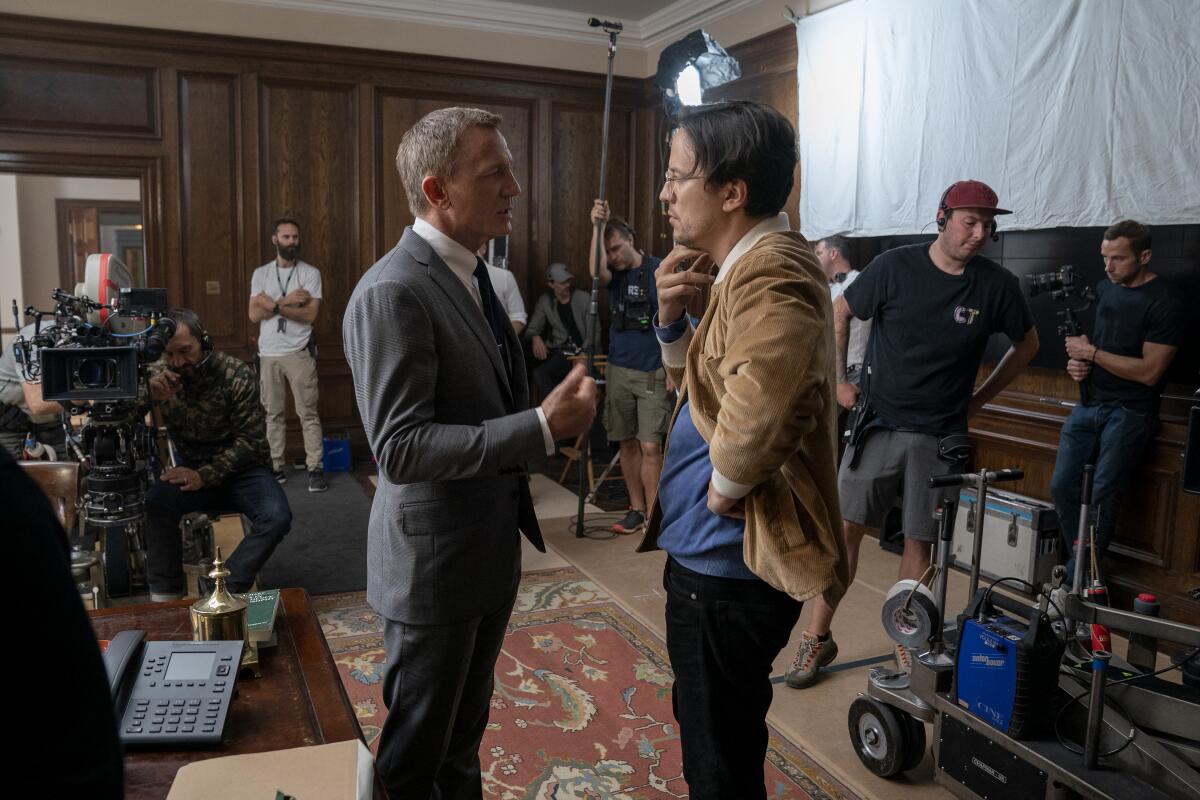
HOW HE GOT THE JOB
Fukunaga, who won an Emmy for directing the first season of HBO’s “True Detective,” is the first American to ever direct a Bond film in the nearly 60-year history of the franchise. When director Danny Boyle left the project over creative differences in 2018, the Bond team needed a replacement on a very compressed schedule, without much time to rewrite the script or prepare for production. Fukunaga had previously met with Bond producer Barbara Broccoli to make clear his interest in directing a film in the franchise.
“He’s fearless,” said Broccoli. “And we needed somebody fearless at that point. He loves a challenge, so he was terrific. He just jumped in and gave it his everything.”
“He brings a wonderful touch to it,” said producer Michael G. Wilson. “He loves Bond. I think he was really intrigued to do this. He saw it as a challenge, and we really needed him. ... We had a release date looming, and we didn’t give him too much time to prepare.”
Craig, also credited as a co-producer on the film, was very conscious that whoever came onto the project would be the one to finish out his run as Bond and complete a five-film arc that began with “Casino Royale.”
“He was very different from what had been before. And I felt that I wanted someone with an individual style of filmmaking, which Cary has,” said Craig, who worked with directors Martin Campbell, Marc Forster and Sam Mendes on the previous films.
“He understands what Bond films are. And we needed a writer, someone who could come in and just dig into the script. We were in a place where it wasn’t ready,” said Craig. “We didn’t have a lot of time, and we lucked out.”
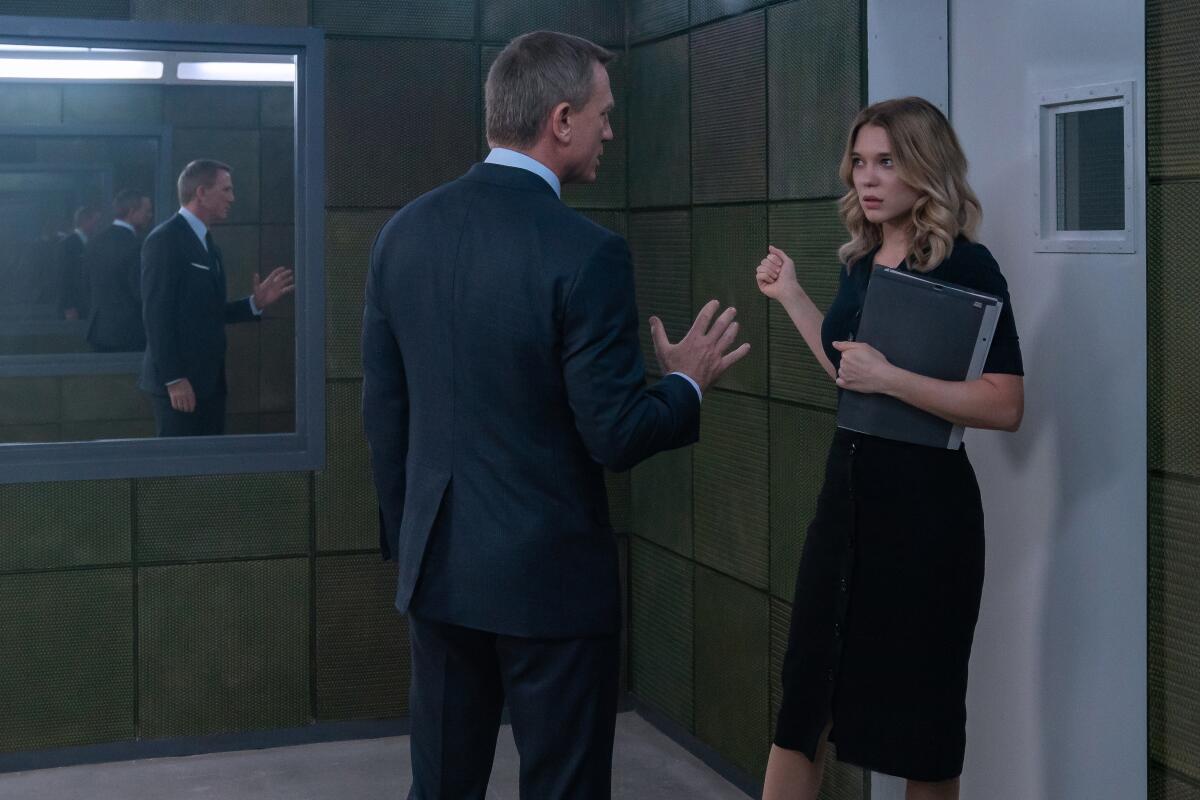
CENTERING THE RELATIONSHIPS
Early reviews have noted “No Time to Die” is as much a character drama as an action-adventure film, with the emotions of Craig’s last time in the role and Bond’s intense relationship with Madeleine Swann shooting throughout the story.
“I really loved the love story with Vesper Lynd in ‘Casino Royale,’” said Fukunaga of Craig’s 2006 debut as Bond, noting it as his favorite film in the franchise and acknowledging how Bond’s romantic connection with Vesper, played by Eva Green, inspired some aspects of his film.
“At the end it was just like, ‘Whoa, this is amazing.’ I’d never seen a woman put Bond in his place like that and break him down, psychologically, analytically,” he said. “Her ability to open his heart up was something that I’d never seen in a Bond film before. And his then closing [his] heart is a tragedy in ‘Casino Royale.’ This movie, the emotions that come out of it, are in large part due to that closing off in that first chapter.
“I felt that we had a real opportunity to explore that again, as a mirror to ‘Casino Royale,’” Fukunaga added. “It was definitely a concerted effort on my part to open his heart up again any way I could.”
Craig believes Fukunaga was able to find the right mix of action and emotion the actor wanted to close out his time in the role.
“You’re always struggling with Bond movies, as any movies of this size, of getting that balance right,” said Craig. “You’ve got to have action, you’ve got to have locations. And we do, but we had a strong story with Madeleine’s character. We had a kind of a heartbeat in the movie, and he didn’t shy away from any of that. He was as much into that as he was into the explosions.
“Let’s say the gadgets in the movie, I’ve always been a bit down on them,” added Craig. “But he wanted them, and I was like, ‘Please just get on with it.’ And I’m so happy that he did. I kind of look at it and I miss them in my other movies now.”
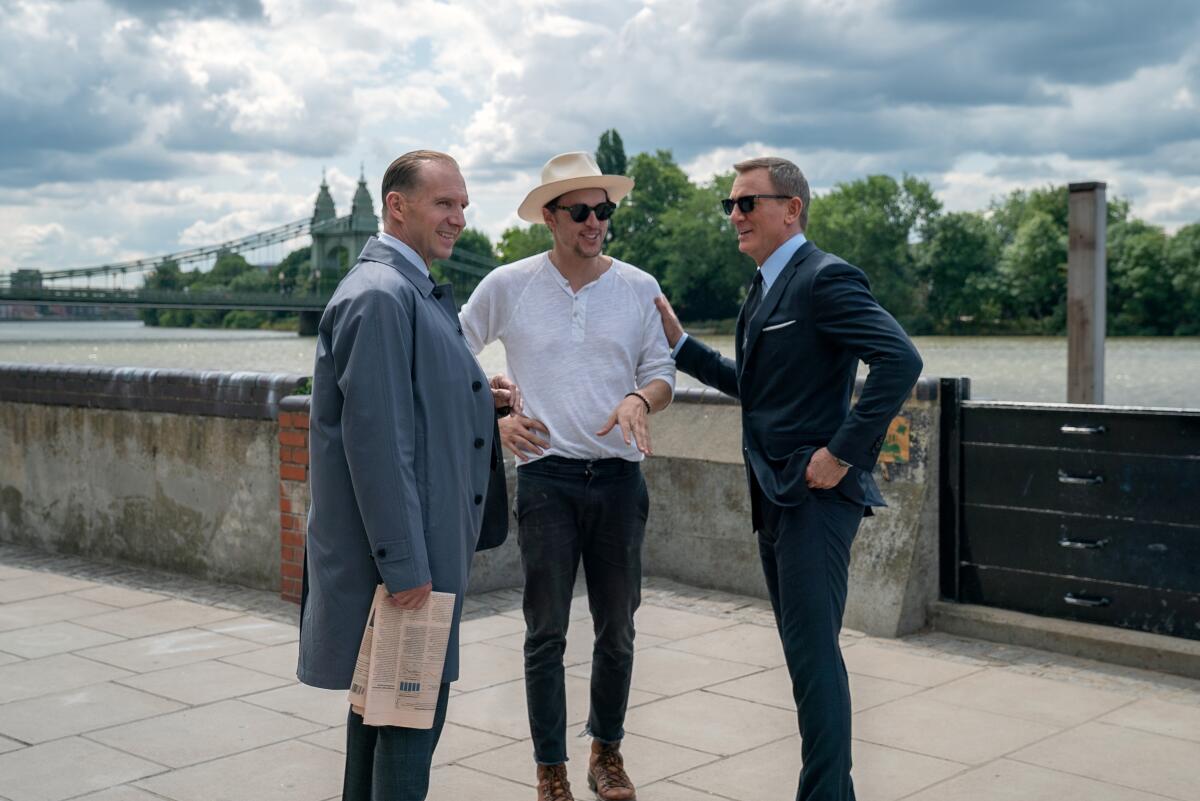
TAKING BOND BACK TO HIS ORIGINS
Fukunaga had met with CIA consultants on a previous project, and while working on the “No Time to Die” script, he met with representatives from the British intelligence agency MI6.
“You learn pretty quickly that real spy work doesn’t really look anything like the Bond world,” said Fukunaga. “As much as geopolitics do play a role in how you’re constructing the story, especially if a film is to reflect the time, the best research I can do for this film was going back to the original films and going back to the books. That was the most valuable research, going back to Ian Fleming’s novels and short stories.
“It made me realize that as much as Daniel Craig’s tenure was a major reset from Pierce Brosnan, it was also probably in a lot of ways closest to Ian Fleming’s original character, because there is a lot of conflict and damage and questioning in the inner monologue in the writing of that character in the original books,” said Fukunaga.
He saw how Fleming created the character in the shadow of World War II, which had a “clarity of the enemy and the purpose.” Then, as the Cold War dawned, “the blurred lines of morality and about being judge, jury and executioner started to weigh on the conscience of the character.”

GIVING THE WOMEN THEIR DUE
Fukunaga has appreciated how the female characters have been growing in emphasis throughout Craig’s run, modernizing and even moving away from the classic “Bond girl” of yore. It’s a change he also credits in part to producer Broccoli.
In “No Time to Die,” Lashana Lynch plays an ambitious agent assigned the 007 number after Bond retires, while Ana de Armas lends disarmingly fizzy energy to a smaller part as a young CIA associate in Cuba. Seydoux brings a steely romanticism to an expanded presence for Swann, and Harris’ returning Moneypenny becomes an emotional and operational anchor for Bond, wryly affectionate while aware of his foibles.
In writing the female characters, Fukunaga again went back to what he found so appealing about Lynd in “Casino Royale.”
“I wanted to have scenes that were equally as surprising and deep,” he said. “And you can’t do that unless the characters have more than one dimension to them and have more than one conflicting agenda inside of them and secrets and are imperfect and paradoxical and just human. And that just deepens the potential for anything.
“Obviously it’s helpful to have great collaborators as actors and as writers on the project to get the most out of those things,” he said. “That’s where Phoebe [Waller-Bridge] was a major ally, because even though these characters were on the page, it was [invaluable] to talk to someone about these characters, giving ideas, and get excited about quirks and weird things in them that we can play with.”
Waller-Bridge was brought on to the project while she was performing off-Broadway in the one-woman stage version of “Fleabag.” She would meet Fukunaga at his apartment in New York, handing a laptop back and forth with the screenplay projected onto a TV. And while fans may want to unravel who is responsible for what in the screenplay, Fukunaga says it is not so easy to sort out.
“No one will ever know,” he said. “I know specifically where there’s lines of Phoebe’s and lines of mine and lines of Purvis and Wade and lines of Daniel’s and lines of [associate producer] Gregg Wilson. It’s just a pretty big mashup,” he said. “Phoebe is just a brilliant writer, and she was very busy at that time period. So we would get her in windows of time. And when she had those windows, she brought all that force of nature that she is.”
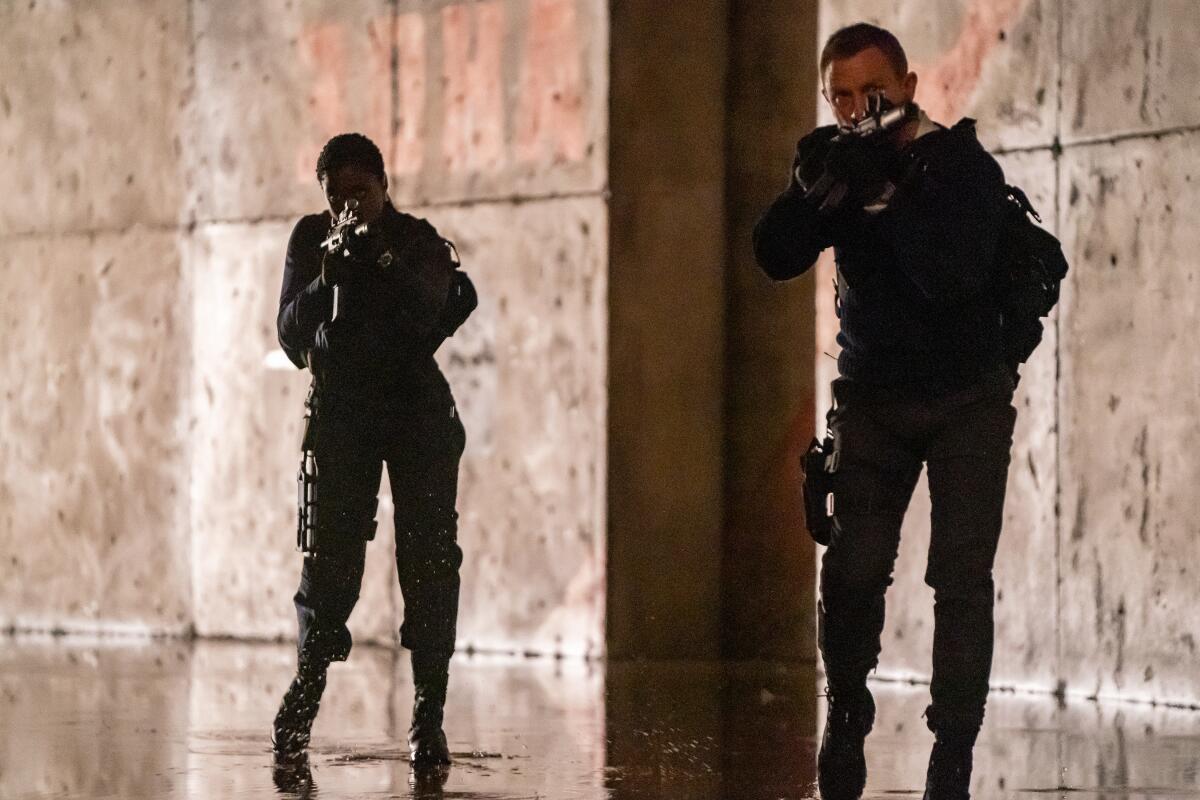
CARY FUKUNAGA WILL RETURN ... MAYBE?
Even as it heralds the end of Craig’s time in the role, the end credits of “No Time to Die” conclude with the famous words “James Bond Will Return.” Will Fukunaga?
“We’d love to have him back,” said Broccoli. “If he wants to do it, we’d love to have him back. We’ll see.”
Fukunaga is deep into shooting the first four episodes of “Masters of the Air,” a limited series produced by Steven Spielberg and Tom Hanks. He is also working on a documentary with acclaimed chef René Redzepi and award-winning food writer Matt Goulding, which he describes as a “socio-geographic tone piece on ingredients and how they traverse cultural and political histories.”
With the spirit of a restless adventurer, Fukunaga himself is unsure about returning to the Bond franchise, saying, “I don’t know. Maybe.
“I’ve never really done anything twice in my life.”
More to Read
Only good movies
Get the Indie Focus newsletter, Mark Olsen's weekly guide to the world of cinema.
You may occasionally receive promotional content from the Los Angeles Times.
